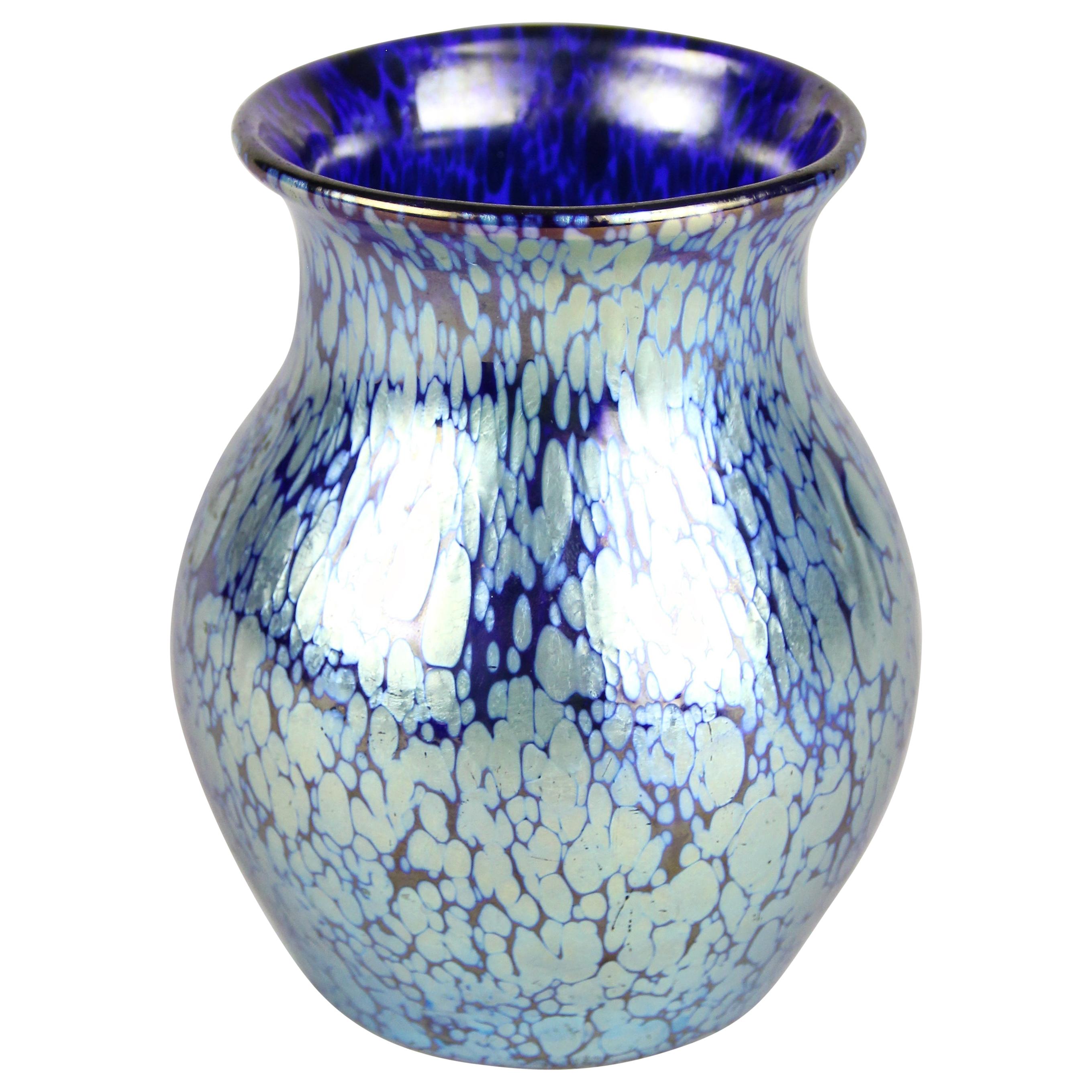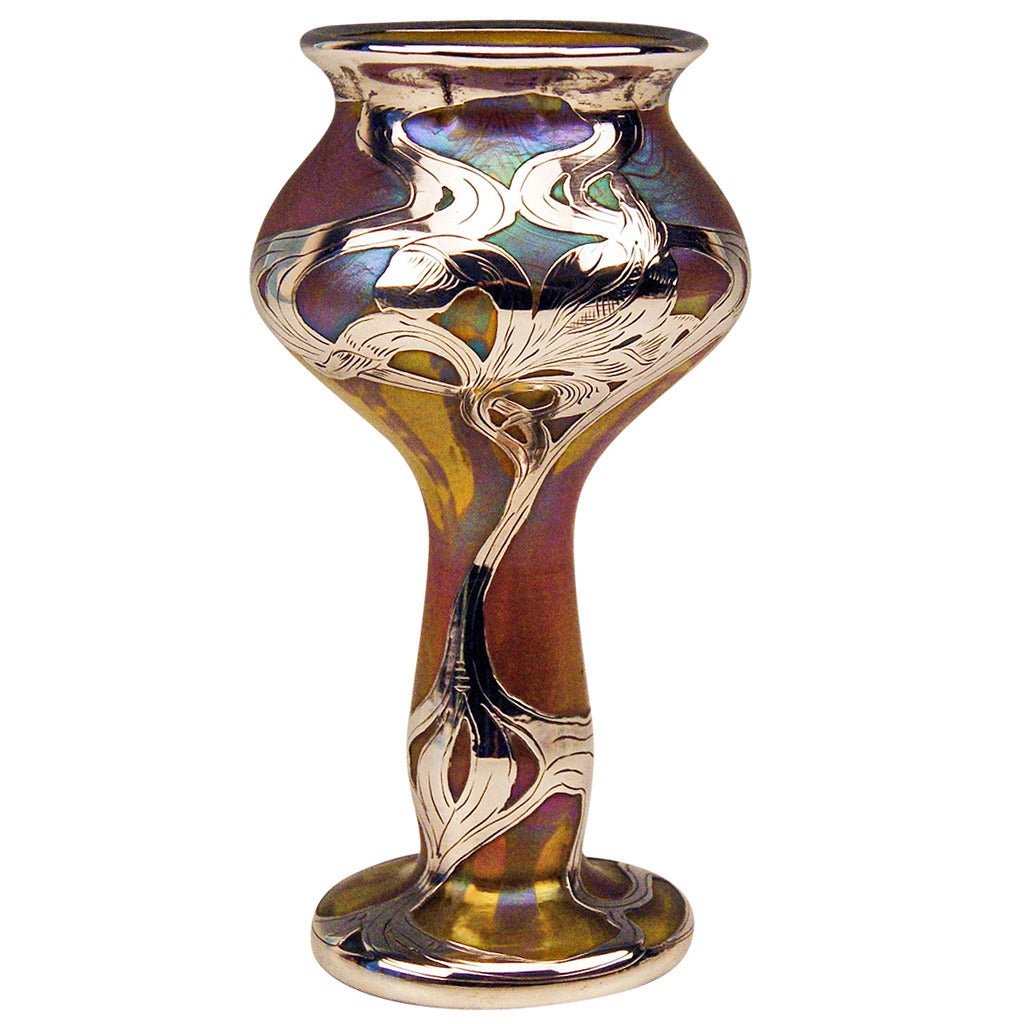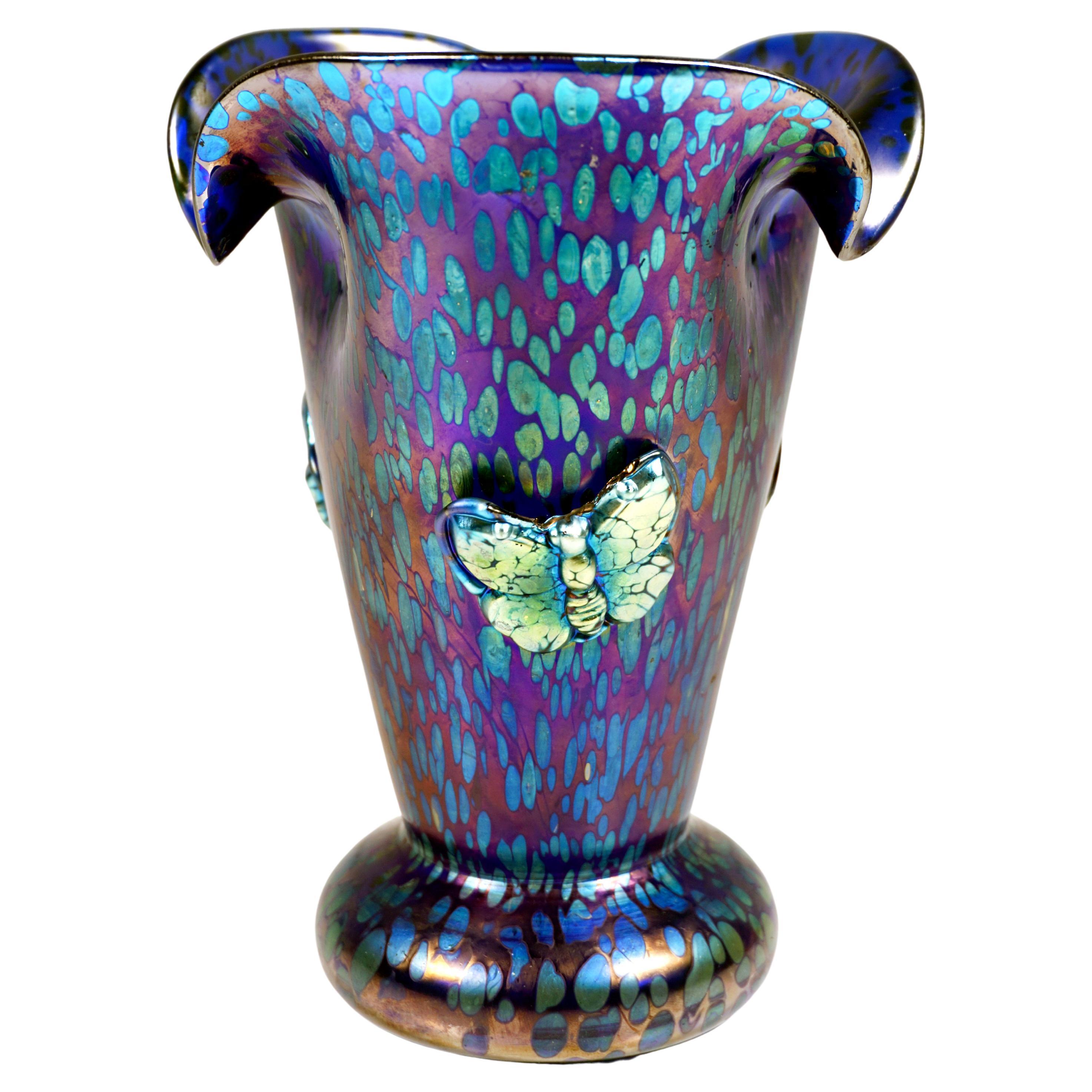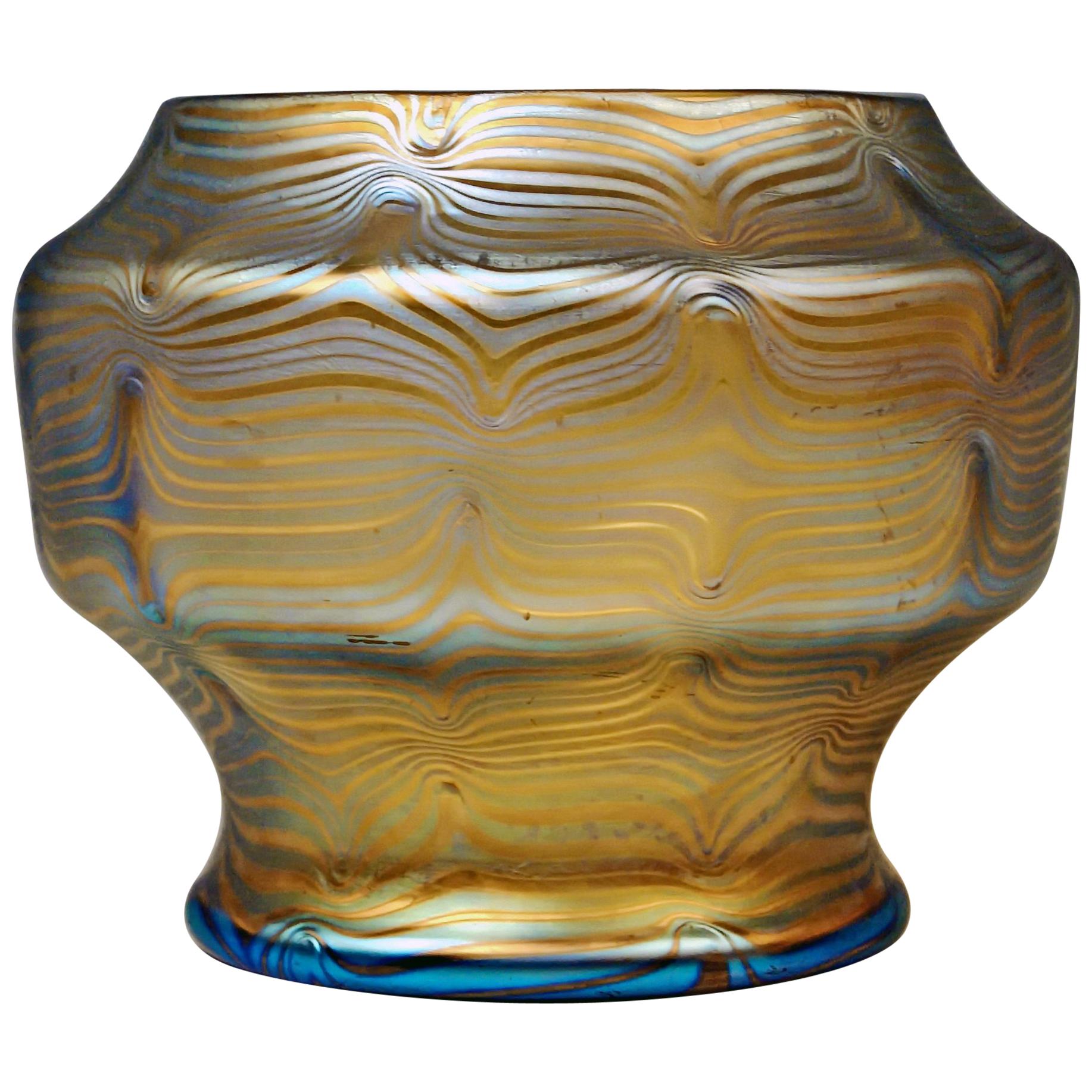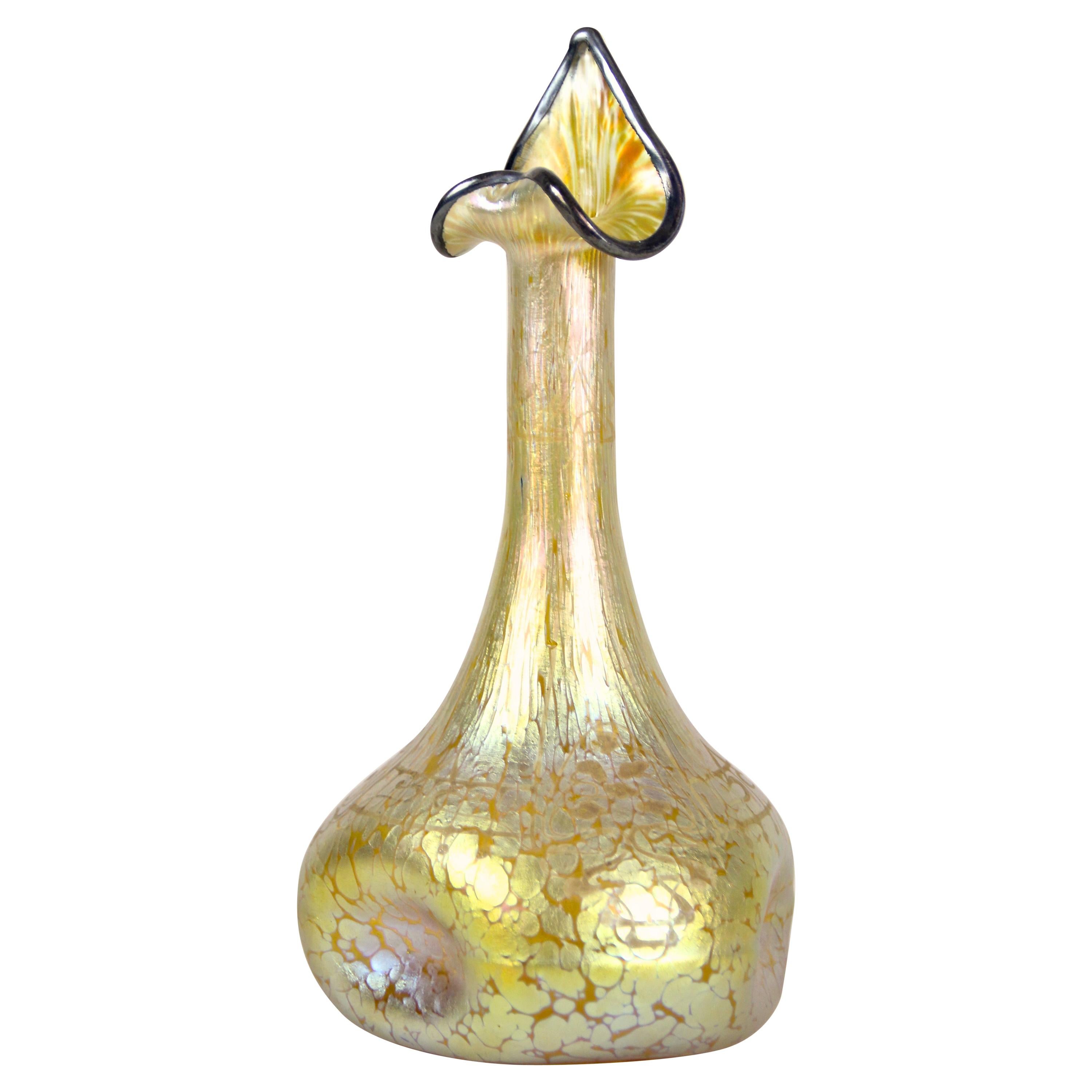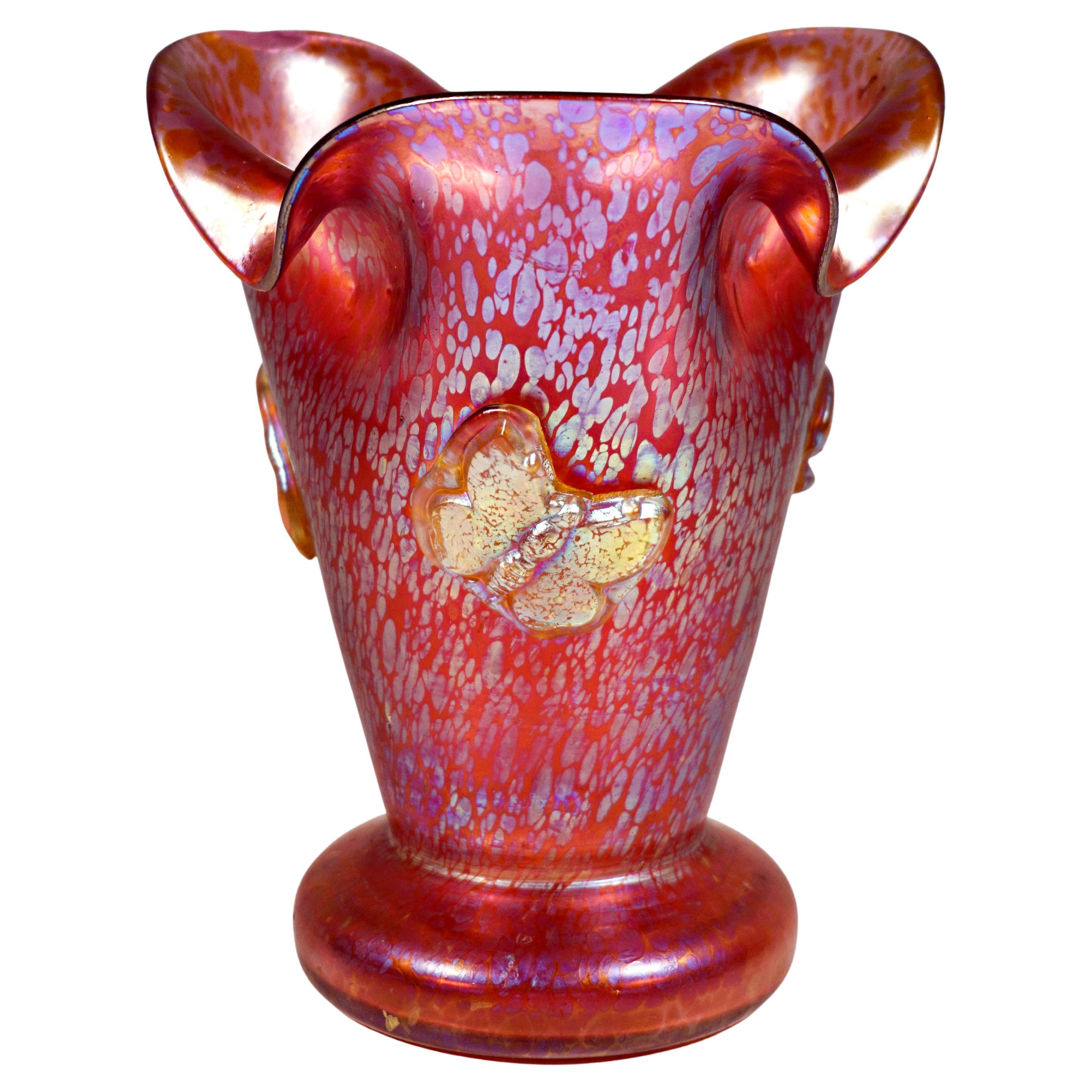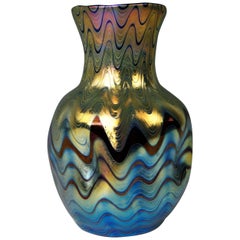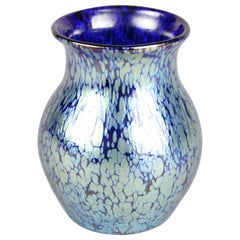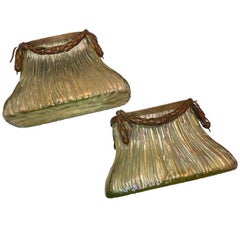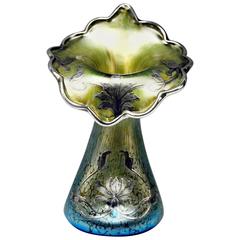
Vase Loetz Widow Art Nouveau Vase Silver Mountings Cobalt Papillon, circa 1900
View Similar Items
Want more images or videos?
Request additional images or videos from the seller
1 of 8
Vase Loetz Widow Art Nouveau Vase Silver Mountings Cobalt Papillon, circa 1900
About the Item
- Creator:Johann Lötz Witwe (Manufacturer)
- Dimensions:Height: 6.57 in (16.69 cm)Diameter: 4.33 in (11 cm)
- Style:Art Nouveau (Of the Period)
- Materials and Techniques:
- Place of Origin:
- Period:1900-1909
- Date of Manufacture:circa 1900
- Condition:there aren't any damages existing.
- Seller Location:Vienna, AT
- Reference Number:1stDibs: LU101445526793
About the Seller
5.0
Gold Seller
These expertly vetted sellers are highly rated and consistently exceed customer expectations.
Established in 1988
1stDibs seller since 2013
279 sales on 1stDibs
Typical response time: 5 hours
More From This SellerView All
- Vase Loetz Widow Klostermuehle Bohemia Art Nouveau Phaenomen Genre 6893 c.1900By Johann Lötz WitweLocated in Vienna, ATVase Loetz (Lötz) Widow Klostermuehle Bohemia Art Nouveau Made by Loetz, Klostermuehle (Bohemia), circa 1899-1900 Decor: RUBY PHAENOMEN GENRE 6893 It is a most remarkable as wel...Category
Antique 1890s Austrian Art Nouveau Glass
MaterialsGlass
- Vase Loetz Widow Art Nouveau Phaenomen Gre Silver Overlay, circa 1900By Loetz GlassLocated in Vienna, ATVase Loetz Widow Klostermuehle Bohemia Art Nouveau Made by Loetz, Klostermühle circa 1900 Decor: PHAENOMEN GRE & Gorgeous Silver Overlay This finest Loetz Art Nouveau ...Category
Antique Early 1900s Austrian Art Nouveau Vases
MaterialsSilver
- Loetz Art Nouveau Vase Cobalt Papillon with Applied Butterflies, Ca 1900By Loetz GlassLocated in Vienna, ATFinest Bohemian Art Nouveau glass vase: Mould-blown vase with torus-shaped stand and funnel-shaped attached wall with trefoil-shaped, lobed mouth rim, wall and inside satin-finished, polished pontil. Shape: Production number / pattern not preserved Decor: Cobalt Papillon...Category
Antique Early 1900s Austrian Art Nouveau Glass
MaterialsGlass
- Vase Loetz Widow Art Nouveau by Franz Hofstötter, circa 1900By Franz HofstotterLocated in Vienna, ATVase Loetz Widow Klostermuehle Bohemia Art Nouveau. Made by Loetz, Klostermu¨hle, circa 1900. Decor: Phaenomen Genre 358. Designed by: Franz Hofsto¨tter (1871-1958). Franz J. Hofsto¨tter was a German artist who worked at end of 19th century as well as in very early 20th century mainly on behalf of public communities. He created for example configurations and decorations for churches in Germany (church of Holy Heart in Ludwigsthal and church Saint Joseph in Weiden/Oberpfalz). After end of First World War Hofsto¨tter worked only for private clients. The artist had studied in Munich (painting, sculpture and architecture) / Hofsto¨tter worked on behalf of Lo¨tz Manufactory (Boehmia / Klostermu¨hle) in period as from 1896 until 1911, having designed most interesting glass items as well as female portraits made of glass: For this reason he received an accolade from jury of Paris World Exhibition 1900...Category
Antique Early 1900s Austrian Art Nouveau Glass
MaterialsGlass
- Vase Loetz Widow Amber Papillon Iridescent Pewter Mounting Silver PlatedBy Loetz GlassLocated in Vienna, ATGorgeous Art Nouveau Vase of very rare shape Made by Loetz (Lötz) Widow Klostermuehle Bohemia, circa 1900 Decor: amber-orange colored type of Papillon Form: round as well as bellied body with scalloped mouth and silver plated mounting Gorgeous glass item with vertical ribbings on surface, running from edge of mouth to area below. This vase's mouth is of irregular form, having extremely scalloped edge causing this vase's very special appearance. The decor is quite rare type of Papillon - amber-orange shaded and blue-golden shining due to its stunning iridescence ! Finally, this vase's round hollow body is attached to high holder which seems to have been manufactured especially for this glass item: It is a silver plated mounting made of pewter: This one has three arms at top area, holding the vase / the Stand is three-sided, excellently decorated with floral ornaments of reticulated type - most probably these are lady slipper orchids...Category
Antique Early 1900s Austrian Art Nouveau Glass
MaterialsSilver Plate, Pewter
- Vase Loetz Widow Klostermuehle Bohemia Art Nouveau New Red Cytisus, circa 1902By Johann Lötz WitweLocated in Vienna, ATVase Loetz (Lötz) Widow Klostermuehle Bohemia Art Nouveau Made by Loetz, Klostermuehle (Bohemia), circa 1902 Decor: NEUROT (= NEW RED) CYTISUS It is a superb as well as eleg...Category
Antique Early 1900s Austrian Art Nouveau Glass
MaterialsGlass
You May Also Like
- Loetz Witwe Art Nouveau Glass Vase Decor Cobalt Papillon, Bohemia, circa 1903By Johann Lötz WitweLocated in Lichtenberg, ATVery decorative Loetz Witwe glass vase in decoration Cobalt Papillon from the Art Nouveau period in Bohemia, circa 1903. This gorgeous vase from the workshops in Klostermuehle shows ...Category
Early 20th Century Czech Art Nouveau Vases
MaterialsBlown Glass
- Pair of Art Nouveau Loetz Bronze Mount VasesBy Johann Lötz WitweLocated in Westport, CTArt Nouveau loetz glass mantel vases with bronze mounts.Category
Antique 19th Century Austrian Art Nouveau Glass
$1,800 / set - Vase Loetz , Style : Art Nouveau , Bohemia, circa 1900By Loetz GlassLocated in Ciudad Autónoma Buenos Aires, CLoetz The glass factory, originally founded in 1836 by Johann Baptist Eisner, was taken over. Loetz was the premier Bohemian glass works during this period. It was located in Klostermühle, near Rejštejn in the Sušice district in South-West Bohemia, which belonged to the Austro-Hungarian Empire until 1918. Susanna Loetz, widow of Glass entrepreneur Johann Loetz in 1852. She renamed the company "Glasfabrik Johann Loetz Witwe", a name that was retained until all activities were stopped in 1947. In 1879 it passed to Max Ritter von Spaun. Under his guidance, together with director Eduard Prochaska, the glassworks flourished as never before and enjoyed its most successful period. Von Spaun and Prochaska concentrated on the development of innovative glass types and new production techniques. Their first successful speciality was a glass type simulating semiprecious stones. It is often called "Marmoriertes Glas" ("marbled glass"). The range contained Onyx (red/brown), Karneol (red/pink) and later Malachit (green). It was introduced in the second half of the 1880's. From the same period dates the Octopus glass, of which the decor resembles the tentacles of a cephalopod. The production of Marmorier-tes Glas was resumed in 1906, in different colours like yellow and white. Octopus, 1885-1890, 1885-1890, unknown, an Malachit, 1885-1890, unknown, The master glass-blowers of Klostermühle had already carried out experiments with iridescence in the first half of the 1890's, and they produced the Olympia, a classically inspired olive green type, in 1896. Similar, in variants of creta green, bronce or Olympia and averse to any redundant decoration was the Glatt decor. It highly contrasted with the more elaborate finishes of that time, but it constitutes a part of the production with a deep sense for taste and quality. Most of the pieces shown in the "Glatt" decors were manufactured for Max Emmanuel in London. The glatt decor remained in use for many years. The Chiné decor had thin glass threads spun around the body in irregular patterns. It is not to be confused with the type of glass that was produced by Kralik. Loetz "Chiné" came in clear, opal, green and pink, Kralik "Chiné" in dark purple. The logical sequel to Chiné was the Pampas decor, green or cobalt blue, in which the threads almost disappeared in the surface, with iridised parts in between. Around the same time the dotted Papillon decor was introduced. The beautiful silver spots were employed on a wide array of models and quite effective on the gooseneck (water sprinkler) and sea shell...Category
Antique Early 1900s Austrian Art Nouveau Glass
MaterialsArt Glass
- Loetz Witwe Glass Vase Decor Candia Papillon, Bohemia, circa 1898By Johann Lötz WitweLocated in Lichtenberg, ATStunning Loetz Witwe glass vase decor "Candia Papillon" out of Bohemia, circa 1898. This very rare version of the famous rose water sprinkler vase impresse...Category
Antique Late 19th Century Czech Art Nouveau Glass
MaterialsBlown Glass
- Glass Vase Tin Mounting Gilt Loetz Austrian Jugendstil Rainbow Colors circa 1900By Johann Lötz WitweLocated in Klosterneuburg, ATGlass vase manufactured by Johann Loetz Witwe Tricolore decoration tin metal mounting designed by Bitter & Gobbers ca. 1900 Austrian Jugendstil gilt mould-blown reduced and iridescen...Category
Antique Early 1900s Austrian Jugendstil Vases
MaterialsGlass
- Loetz Witwe Glass Vase Decor "Creta Papillon" Iriscident, Bohemia, circa 1902By Johann Lötz WitweLocated in Lichtenberg, ATBeautiful small Loetz Witwe glass vase out of the famous workshops in Klostermuehle/ Bohemia from around 1902. The artfully formed vase with its...Category
Early 20th Century Czech Art Nouveau Glass
MaterialsBlown Glass
